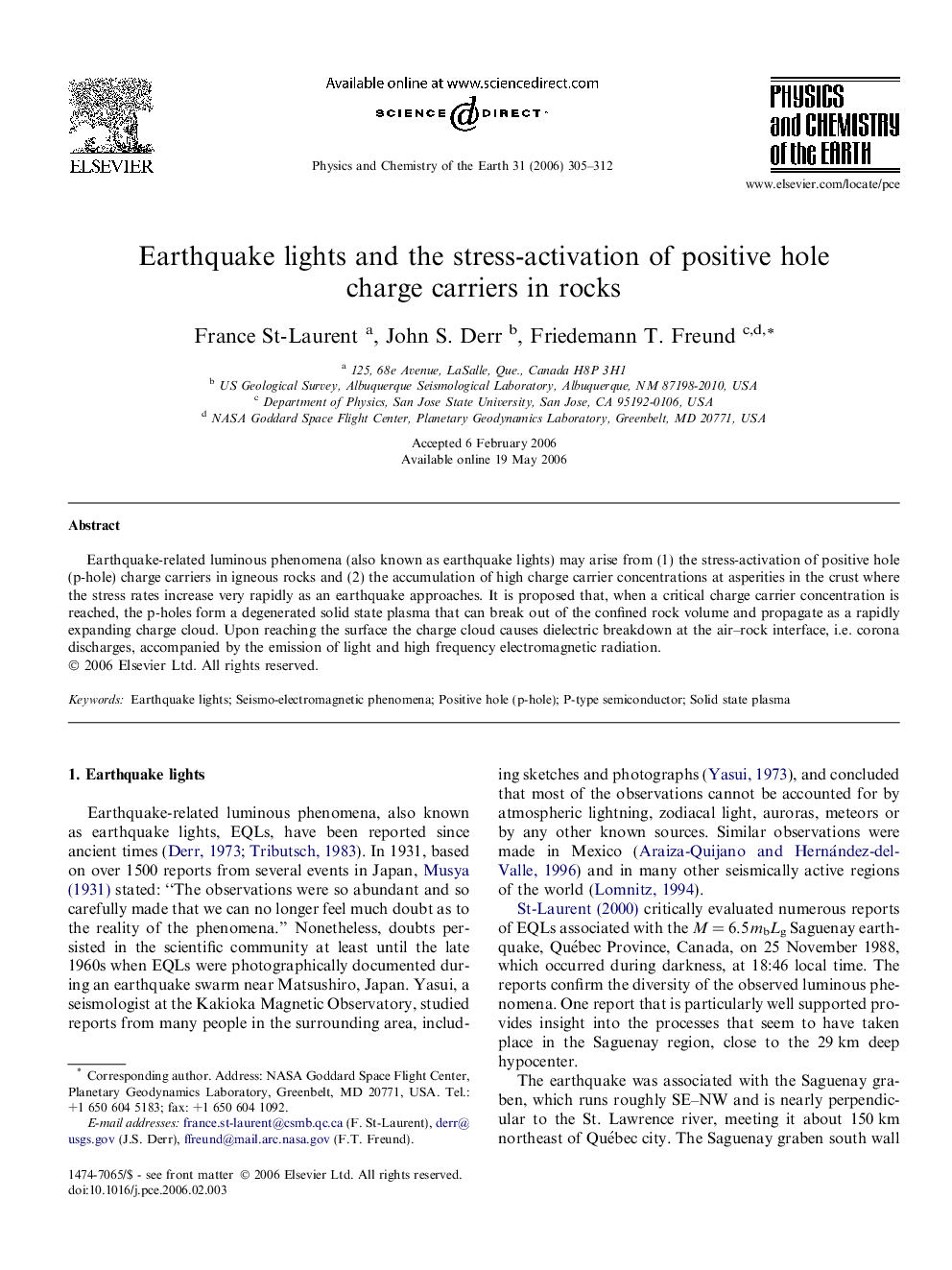| Article ID | Journal | Published Year | Pages | File Type |
|---|---|---|---|---|
| 4721875 | Physics and Chemistry of the Earth, Parts A/B/C | 2006 | 8 Pages |
Earthquake-related luminous phenomena (also known as earthquake lights) may arise from (1) the stress-activation of positive hole (p-hole) charge carriers in igneous rocks and (2) the accumulation of high charge carrier concentrations at asperities in the crust where the stress rates increase very rapidly as an earthquake approaches. It is proposed that, when a critical charge carrier concentration is reached, the p-holes form a degenerated solid state plasma that can break out of the confined rock volume and propagate as a rapidly expanding charge cloud. Upon reaching the surface the charge cloud causes dielectric breakdown at the air–rock interface, i.e. corona discharges, accompanied by the emission of light and high frequency electromagnetic radiation.
